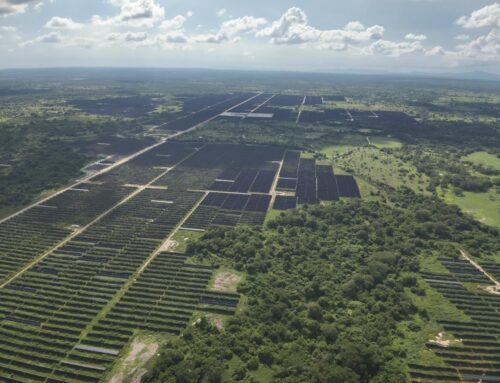Climate Change Is the Backdrop to Our Lives, But It’s Missing in Movies
March 26, 2025
During the summer of 2023, Matthew Schneider-Mayerson and a team of fellow researchers binge-watched 250 of the most-rated movies from the past decade—purely for research purposes.
The group was primarily keeping an eye out for one thing: Is climate change mentioned? In most cases, the answer is no.
Only 13 percent of the films had any sort of acknowledgment of this massive problem changing the world and our everyday lives, according to the study, which was published in February. The researchers also assessed how this environmental crisis is represented: Some of the films centered the plot entirely around climate-fueled weather disasters, while others just off-handedly brought up climate change in dialogue.
Research shows that these climate portrayals in fictional movies and shows are crucial for influencing behavior in the real world. Now, there is a growing movement in the movie industry for filmmakers and production execs to embrace climate change content on the big screen.
The Climate Genre: Climate impacts are pervading all parts of society in big and small ways, from fueling hurricanes to worsening seasonal allergies. However, the issue is often conspicuously absent from fictional films. Directors have cited a variety of reasons for this omission, including scientific knowledge gaps and fears of alienating viewers given the politicization of climate change.
In 2024, researchers, including Schneider-Mayerson, and nonprofit story consultancy Good Energy developed a climate reality check—a Bechdel test of sorts—for films to enable writers and the broader film sector to “interrogate their own stories,” according to the group’s website. It has two simple criteria: Does climate change exist in the movie, and does a character know it? The test only applies to movies set here on Earth around the present day, rather than other planets, fantasy universes or the past.
To get a pulse check on the industry as a whole, the researchers assessed 250 popular films from 2013 to 2022, ranging from “Toy Story 4” to “Scream.” They discovered that around a tenth of the films passed the climate reality check, and climate inclusion became more common over time.
“I think the reality is that those exemplars are fantastic, and we need more of them, but everything else has its own impact too,” Schneider-Mayerson told me. “All of the stories that never acknowledge climate change or any other ongoing environmental problem also have an impact on us.”
In the new, separate study, Schneider-Mayerson took this assessment one step further to look at how climate change and other environmental issues like pollution and biodiversity loss are discussed in the films. According to the research, climate change was most present in science fiction, adventure and mystery genres, and the issue was most often talked about at a global scale. That’s great, but movies should also discuss climate impacts in everyday life, Schneider-Mayerson said.
“Climate change is a global epic problem, but it’s also something that is affecting people’s lives and livelihoods, and the ability to have children and romances and all these things,” he said. “If we want to sort of accurately represent the ways that climate change is affecting the world around us, you know, we need stories that are operating at both of those scales.”
Schneider-Mayerson understands that people don’t always want to sit down for a two-hour movie entirely centered around climate change, sometimes because they hit too close to home. That’s why expanding climate content across genres is important, he said.
For example, the comedy slasher film “Happy Death Day”follows a college student who has to relive the same day to try to solve her own murder. Throughout the day, she runs into a climate activist, who asks if people on campus want to help “stop global warming.” Per the study’s metrics, that counts as a climate mention—or more accurately, six climate mentions, since the main character is repeating the day.
“Most of us turn to films and TV shows for relaxation or distraction—not necessarily to think about real world problems. As such, I think films like ‘Happy Death Day’ are even more important, perhaps, than climate-centered films, because people who either don’t prioritize climate change or don’t believe that it’s an important problem” will see them, he said. “If we see problems repeated, then we think more about them, and we tend to think that they’re more urgent and sort of demand more of a response. If we never hear about a problem, it’s easy just not to think about it.”
Real-World Impacts: While reality can inspire fiction, we’ve long known that movies can also influence real behaviors. That’s the main reason companies pay thousands or millions of dollars to feature their products in films. A 2017 study found that climate change in mass media may lead to more environmentally friendly behavior and help viewers understand more complex topics.
But in some cases, television and movies can drive unsustainable practices—sometimes inadvertently. Take “The White Lotus,”a popular show currently running on the streaming platform Max. Each season is set in a different nature-centric location, including Hawaii, Italy and Thailand. And each season also triggers a massive influx of tourism in these areas, something researchers have dubbed “The White Lotus Effect,” The Guardian reports. This can put natural resources in these regions at risk and increase carbon-heavy flight travel, experts say.
Similar trends may have occurred after the show “Yellowstone” started airing, with people near the national park reporting increased tourism and land development pressure.
The show “made owning a piece of this landscape glamorous around the same time the pandemic and remote work drove more people to do so,” Arthur Middleton, a professor of environmental management at the University of California, Berkeley, wrote in an op-ed for The New York Times. He studies the Greater Yellowstone ecosystem. “While there is no data explicitly linking the television show to development, it only takes a small number of new homes in each valley near Yellowstone to change its future,” he said.
But shows and movies can also provide a boon to local economies and help support local conservation, if production is done sustainably and equitably, Grist reports. In the climate space, advocates and even government agencies are using popular shows and movies to help teach people how to adapt or lower emissions. For example, the Federal Emergency Management Agency recently partnered with DreamWorks Animation and the Ad Council to release a series of public service announcements featuring the animated crime-fighting pup Dog Man to help children prepare for disasters like hurricanes and wildfires.
Though the movie industry is still slow to pick up climate content on screen, Hollywood itself was recently forced to face the reality of the present crisis head on as fires tore through greater Los Angeles in January. As disasters continue to hit, it’s crucial that filmmakers use their influence to help educate the public on impacts and solutions, according to the founders of the Hollywood Climate Summit, a nonprofit group of movie industry folks dedicated to this cause.
“We need to embrace creating an industrywide environment for telling climate stories,” the founders wrote for The Hollywood Reporter. “Doing so will open the door to dozens more ways to portray the present and future that will defy apathy and encourage action.”
More Top Climate News
California’s firefighting agency released the final round of fire hazard maps for much of the state this week, which show that “high” or “very high” hazard zones have increased overall by more than 150 percent since 2011. These zones cover 3,626 square miles, which are home to around 3.7 million people, according to an analysis by CalMatters.
The new maps represent areas in cities and towns where local fire departments are responsible for fire management. Experts say the increase can be attributed to a few factors, including better modeling and worsening climate change, which makes vegetation drier and more likely to burn. The findings of these maps could affect building codes, defensible space, real estate disclosure rules and more for people in high-risk areas.
Universities in Europe are increasingly recruiting U.S. scientists who lost research funding from the Trump administration’s budget cuts, Catherine Porter reports for The New York Times. That includes Aix Marseille University in France, which recently opened a program called “Safe Place For Science” that they consider a refuge for “scientific asylum seekers.” Universities in Brussels and government leaders around the European Union are working on similar programs and funds to support American researchers who may want to leave the country.
The National Institutes of Health will no longer fund new work on the health impacts of climate change, Annie Waldman and Sharon Lerner report for ProPublica, according to internal documents reviewed by the outlet. Experts are concerned about the implications of this, as climate impacts threaten human health in myriad ways, from extreme heat increasing the risk of heart disease to reproductive issues from saltwater intrusion.
“This is an administration where industry voices rule and prevail,” Dr. Lisa Patel, executive director of The Medical Society Consortium on Climate and Health, a coalition of medical professionals that raises awareness about the health effects of climate change, told ProPublica. “This is an agenda item for the fossil fuel industry, and this administration is doing what the fossil fuel industry wants.”
About This Story
Perhaps you noticed: This story, like all the news we publish, is free to read. That’s because Inside Climate News is a 501c3 nonprofit organization. We do not charge a subscription fee, lock our news behind a paywall, or clutter our website with ads. We make our news on climate and the environment freely available to you and anyone who wants it.
That’s not all. We also share our news for free with scores of other media organizations around the country. Many of them can’t afford to do environmental journalism of their own. We’ve built bureaus from coast to coast to report local stories, collaborate with local newsrooms and co-publish articles so that this vital work is shared as widely as possible.
Two of us launched ICN in 2007. Six years later we earned a Pulitzer Prize for National Reporting, and now we run the oldest and largest dedicated climate newsroom in the nation. We tell the story in all its complexity. We hold polluters accountable. We expose environmental injustice. We debunk misinformation. We scrutinize solutions and inspire action.
Donations from readers like you fund every aspect of what we do. If you don’t already, will you support our ongoing work, our reporting on the biggest crisis facing our planet, and help us reach even more readers in more places?
Please take a moment to make a tax-deductible donation. Every one of them makes a difference.
Thank you,
Search
RECENT PRESS RELEASES
Related Post




